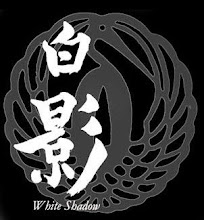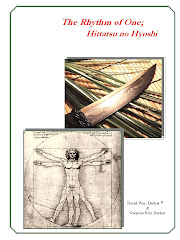The world of the collector can get quite heady, it doesn’t
matter what you are collecting. For example, since creating my website several
people have generously referred to me as an expert or an authority. While I
take that as a great compliment it is not all together true. Certainly I have
more experience or knowledge of Fairbairn Sykes fighting knives than the
average knife-person but I am far from an expert.
It is amazing how much history can be twisted or lost in a
few years time. When we are talking WW-II fighting knives we are talking 70
years. Sadly many of the “experts” have passed away. They were the men who were
issued and carried the knives we collect. Some of them lived or died by the
knife and hand to hand skills they learned from legendary people like WE
Fairbairn, EA Sykes, Pat O’Neill, and Rex Applegate. These people often took
with them their stories and left us to do our best to search out the truth.
Sometimes Names and Places get confused in the minds of men
nearing their 9th decade. Is that to be wondered at? Sometimes
details are sharp and crystal clear but the big picture is fuzzy. Businesses
and even the buildings they knew may now be gone, replaced with others, or
paved for parking or a new hi-way. What city has not changed since WW-II? The
old Vet says: “The shop was in the third door down from the corner, you know the one
near the fish market." We go our merry way searching for
the fish market that no longer exists and decide that the old codger must have been a little
confused. He knew that the smithy he talked about was no more than a shed on
the back of another shop, operated by maybe a cutler or a jeweler, but we are
looking for a full blown blacksmith shop. He says the knife he was issued was
made from a bayonet and we say that is simply folklore because we know you
cannot make a commando knife from a bayonet. He handled the knife, carried it
into combat, and seventy years later we call ourselves the experts. You wonder,
why am I writing all of this?

Here is a photo of a man at a large open forge. He is John
Paisley of Glasgow, Scotland. Reportedly he hand crafted a few commando knives
and other edged weapons for the SOE and other clandestine groups during WW-II.
Some have researched the man and decided that there is only one possible man
who could fit that description and he was not a knife maker, but a jeweler. The
location of the jewelry shop does not fit the one description that exists of the
location of Paisley’s forge. Therefore, it cannot be him in the photo, he does
not exist, and the photo is a fake. Paisley knives must therefore also be fakes,
end of story. Some experts have said that the clothing and the forge appear to
be of the period but they note there is no signature or date on the photo. Do
you have any family photos undated and unsigned? At least one expert, perhaps
two or three, agree with me that the jeweler and the knife maker are likely one
and the same. Many of the experts overlook the fact that jewelers often made or ornamented sgian dhu or scottish dirks, or that men's clothing shops, like J&I Marshall, sold commando knives. We get locked into one way of thinking.

I have performed some research on the internet and found
that at this time in history there were still small local forges all over Scotland.
It is not inconceivable that Paisley did his knife making/forging at a location
away from his city storefront. It could have been right in the back alley or in
a more rural location. The experts counter, then why is there no listing for
his forge in the gazetteers? First, I suggest that a man making weapons for people
involved in clandestine operations probably did not hang out a shingle advertising
such. That would be like a merchant putting a sign in his window: “Seal Team
Six Shops Here!” The biggest difference is today some merchant might be gauche
enough to do that, back then people were more discreet. Second, his forge may
have not been a flourishing business that would rate a listing in a gazetteer.

I would like to go to Scotland and research this enigma
named John Paisley. So far several explorations via the web and email have not
panned out. The passage of time is confounding the issue and making it much
harder to find any factual evidence. We are left with the burden of proof that
he existed while others are content to say he did not. Their "proof" is an absence of proof. I admit there is the possibility that John Paisley is a fictitious
character. If the knives are indeed counterfeit I have a theory who the real J.
Paisley might be. If that line of research were to prove out, and my optional
hypothesis prove true, then the story would be just as tantalizing and the
knives just as desirable. All it takes is time and money, and a whole lot of
luck. Someone out there knows the truth, someone who is of an age, hopefully with
a few years left, to tell us the true story. There are more photos and info on our website. http://www.fairbairnsykesfightingknives.com/index.html
kvt!lEBOsv1d4ryg~~60_3.jpg)














